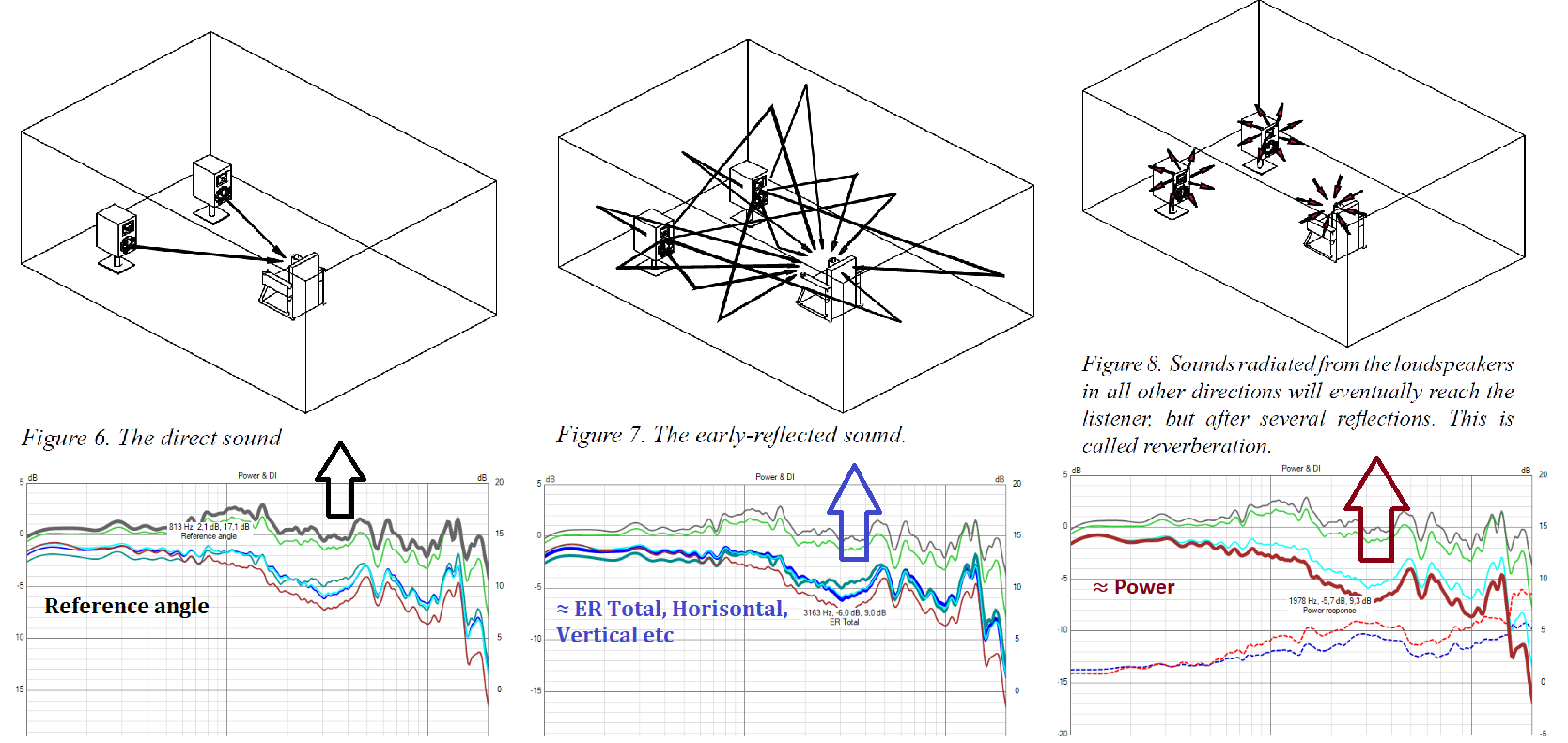Ply


Yes, gott nytt år!

JM:
Usch, låter tufft med trycket inom vården!
Ja, tiden ja,.. bra tillägg och bra med de tydliga exemplen på hur upplevelsen påverkas av tidsfördröjningar. Jag tänker att denna fråga (som säkert är viktig) lika mycket eller mer handlar om rumsakustik, där förvisso spridningsmönstret är den del av ekvationen. Early reflections (ER) i Spinorama beskrivs så här av Toole i denna artikel:
https://www.harman.com/documents/AudioScience_0.pdfThese sounds have been reflected only once in transit and, in most domestic-size rooms, will arrive within approximately the first twenty to thirty milliseconds (ms) after the direct sound. They are called early reflections….
… In small rooms, such as we have in our homes, echoes are almost never a problem, but early reflections are major determinants of what we hear from loudspeakers. Obviously, the strength of individual early reflections is determined by the directivity of the loudspeakers and the reflectivity of the walls. So, when measuring the loudspeaker we must do so at the appropriate angles away from the forward axis. Doing this means that we need information about typical rooms and the arrangements of loudspeakers and listeners within them….
...Sound power is a measure of all of the sound radiated from a loudspeaker in all directions.
Vilka åskådliggörs av:

- Toole-Direct_Early_Reflections-Reverbation-Spinorama.png (263.32 KiB) Visad 10240 gånger
Dessa olika kategorier mappar väl delvis mot de exempel du gav, JM (dock ej helt). Men genom att förstå informationen i Spinorama kan man applicera dem på ett godtyckligt rum och själv prioritera vad som är "bäst ER" i olika riktningar. Alla finns ju att tillgå:

- Power_DI_traces.png (140.18 KiB) Visad 10243 gånger
Lämpligen borde man ha en rumssimulator också där man kan knappa in Spinorama-data. (Ofta finns det väl en mängd randvillkor (se I-ors kommentarer) som gör dessa rätt så krävande att få exakta).
Slutligen, detta med att mikrofonen är "dum" är skälet till att använda Spinorama (och på många sätt lite synd att det argumentet kommer upp emellanåt utan beakta Spinorama, eller att se det som lösningen, som lär ha funnits i många år):
So, why not just measure the loudspeaker in a room? Because, compared to two ears and a brain, a microphone is a “dumb” device. It accepts sounds from any angle, at any time, and treats them equally. In contrast, a human distinguishes between direct sounds and later arrivals (the precedence effect and forward masking), and between sounds from one direction and those from another (binaural discrimination). Steady-state “room curves” are not at all analytical in these respects, offering little insight into what may be responsible for any interesting features – the loudspeaker itself or its interaction with the room boundaries. To make measurements that allow us to anticipate what may happen in real rooms we need statistical data about what happens in real rooms, all of which are different in some respects. Such a survey was done, and the data analyzed to show the angular statistics for the various significant reflections, including delays and propagation attenuations. A measurement system was then designed that yielded a set of frequency response curves indicating the direct, early reflected and reverberant sounds expected from the loudspeaker under test, when used in an ‘average’ listening room [9].


